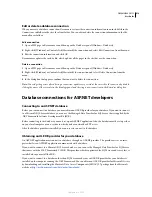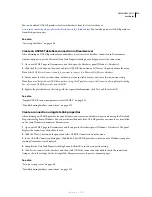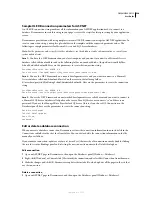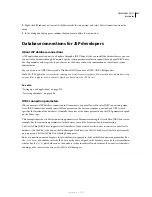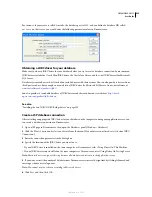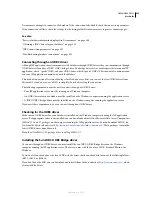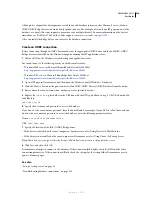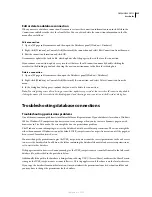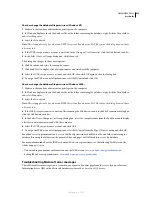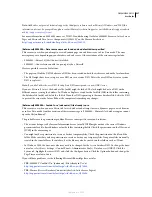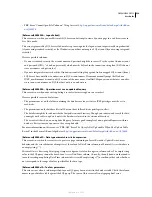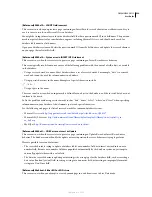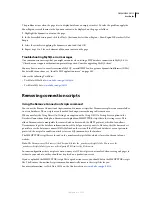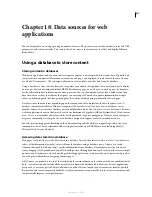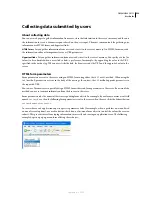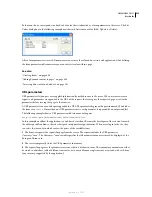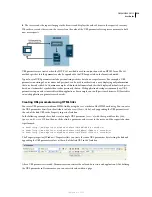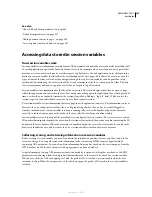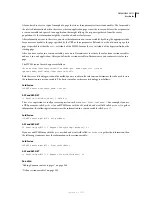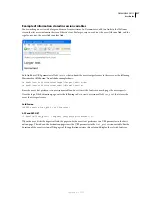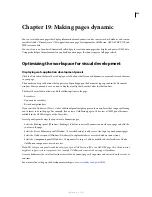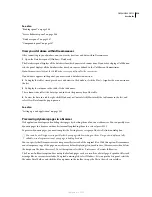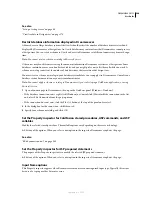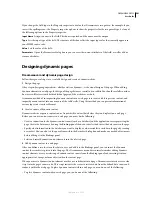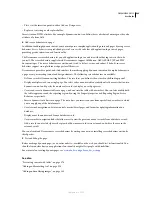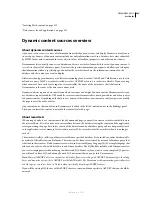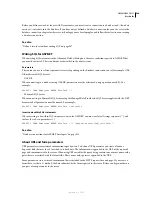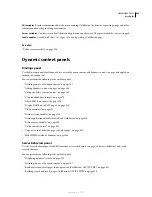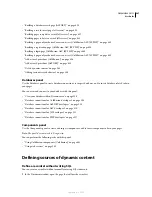
DREAMWEAVER CS3
User Guide
532
Collecting data submitted by users
About collecting data
You can use web pages to gather information from users, store that information in the server’s memory, and then use
the information to create a dynamic response based on the user’s input. The most common tools for gathering user
information are HTML forms and hypertext links.
HTML forms
Let you gather information from users and store it in the server’s memory. An HTML form can send
the information either as form parameters or as URL parameters.
Hypertext links
Let you gather information from users and store it in the server’s memory. You specify a value (or
values) to be submitted when a user clicks a link—a preference, for example—by appending the value to the URL
specified in the anchor tag. When a user clicks the link, the browser sends the URL and the appended value to the
server.
HTML form parameters
Form parameters are sent to the server using an HTML form using either the
POST
or
GET
method. When using the
POST
method, parameters are sent in the body of the message. In contrast, the
GET
method appends parameters to
the requested URL.
You can use Dreamweaver to quickly design HTML forms that send form parameters to the server. Be aware of the
method you use to transmit information from the browser to the server.
Form parameters take the names of their corresponding form objects. For example, if your form contains a text field
named
txtLastName
, then the following form parameter is sent to the server when the user clicks the Submit button:
txtLastName=
enteredvalue
In cases where a web application expects a precise parameter value (for example, when it performs an action based
on one of several options), use a radio button, check box, or list/menu form object to control the values the user can
submit. This prevents users from typing information incorrectly and causing an application error. The following
example depicts a pop-up menu form offering three choices:
September 4, 2007

